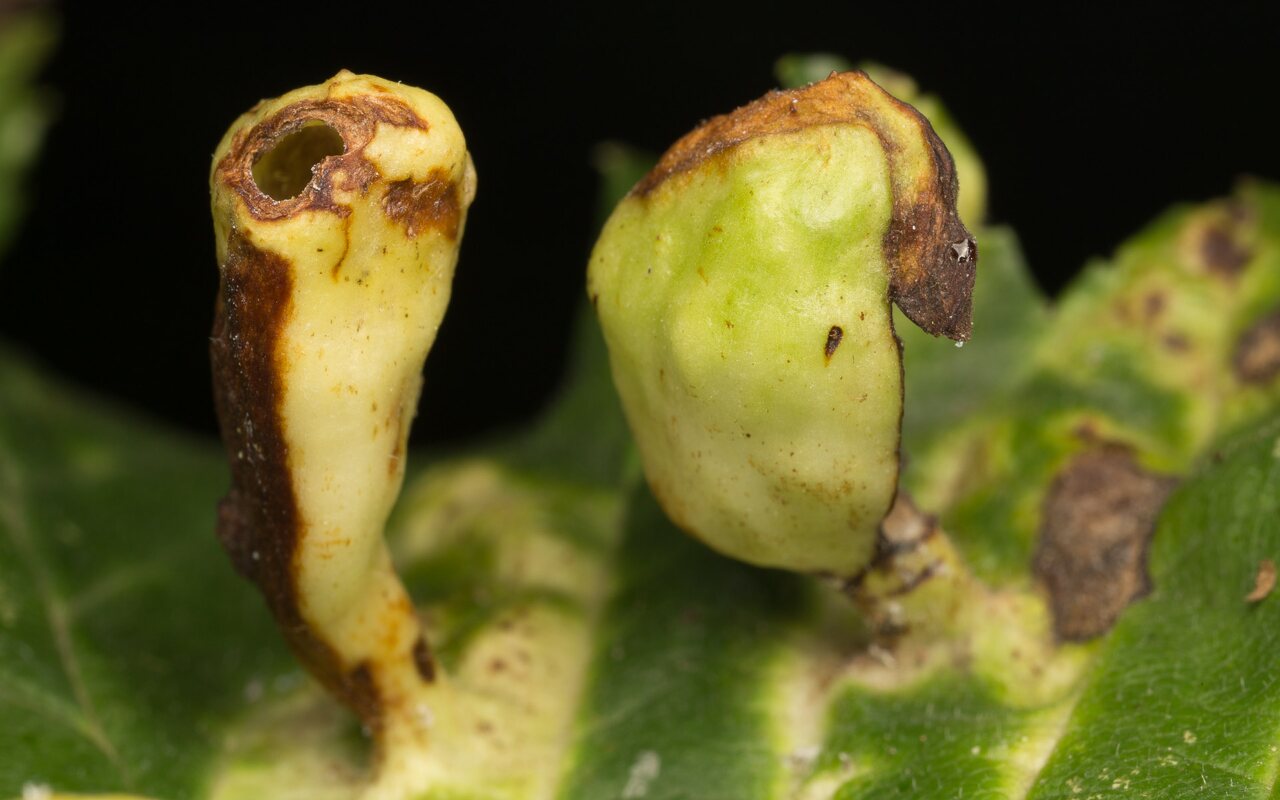
Tetraneura ulmi · guobinis gumbadaris amaras
- elm sack gall aphid, fig gall
- Ulmenblasenlaus
- guobinis gumbadaris amaras
- vīksnu-labības laputs
- bawełnica wiązowo-zbożowa, torebnica wiązowa
- https://influentialpoints.com/Gallery/Tetraneura_ulmi_Elm-grass_root_aphid.htm
- https://en.wikipedia.org/wiki/Tetraneura_ulmi
It is found in Asia, Europe and North America, causing abnormal plant growths, known as galls on their primary host, elm trees (Ulmus sp.). The gall is a stalked, club-like smooth pouch (7−15 mm high) on the leaves of elm trees. Feeding inside the gall is a nymph and some wax. Partly formed galls are pale yellow patches with irregular lumpy projections on the top surface of the leaf. On the underside of the leaf, young galls may have a hairy opening.
Mature asexual females leave the galls in the summer and lay eggs on grass roots. The aphids are pink, orange or purple, 2–3 mm long and covered in a thin layer of powdered wax. In the autumn, winged forms fly to elms and give birth to wingless mites of both sexes. After mating each female lays an egg and a female nymph hatches in the spring and starts feeding on the underside of a leaf. The leaf reacts by forming a tiny, yellowish pimple on the upper side, which is the early growth of a gall, into which the nymph enters, feeds and produce offspring.
‥
0 comments
Add a comment
Comments